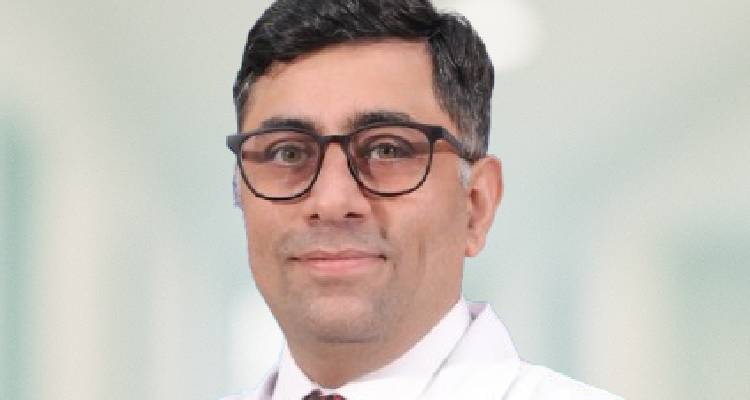In the article, Dr Garvit Chitkara explains how AI is shaping early detection and personalised care in breast cancer
 Dr Garvit Chitkara, Associate Director – Breast Oncology, Nanavati Max Super Speciality Hospital
Dr Garvit Chitkara, Associate Director – Breast Oncology, Nanavati Max Super Speciality Hospital
Recent developments in the world of Artificial Intelligence suggests that AI models can predict an individual’s five-year risk of developing breast cancer. These models, trained on a large dataset of mammograms images can pick patterns of calcifications, tissue distortions, or density shifts in breasts, long before a tumour is visible and generate an individualised ‘risk score.’ The news can be welcoming, specifically for women from high-risk groups, who can assess their five-year risk of developing breast cancer and seek treatment in time.
Breast cancer is a leading cause of cancer among women in India. Over 2.3 million new cases are detected globally each year, making breast cancer one of the most commonly diagnosed cancers. The sheer burden of the disease highlights the importance of smarter diagnostic tools.
Importance of early detection:
Early diagnosis is the key to positive treatment outcomes. If the cancer is detected at initial stages, where it’s localised to a specific area of the breast, the five-year treatment survival rate exceeds ~99 per cent. The treatment outcomes keep declining as the cancer spreads to the lymph nodes or distant sites. That is why early detection means, breast conserving surgeries with better cosmesis, fewer side-effects, and lower treatment costs.
How can AI benefit cancer patients:
Global breast cancer screening guidance is shifting earlier, with women between 40 to 74 years advised a biennial mammography. At the same time, high-risk women with a family history of cancer, genetic mutations (BRCA 1 or 2) and prior chest radiation at a young age are advised earlier and/or annual MRI.
AI risk score can help the clinicians personalise a screening and diagnostic plan for high-risk patients. This way, instead of following a common screening timeline, these patients can be monitored closely and individuals with lower risk, can avoid unnecessary screenings. But the role of AI is limited. It cannot diagnose or rule out cancer, opinion of your treating breast oncologists is gold standards when it comes to diagnosis or treatment protocol.
Using AI models responsibly:
AI applications in breast cancer is a promising first step. But it also raises a few questions, can these models be integrated across all Indian diagnostic settings, will risk scores truly reduce misses without increasing overdiagnosis and anxiety, what about data privacy and accountability if the clinical and AI disagree.
But at the same time, the path to improvement is clear, we need models trained and externally validated on Indian datasets, with transparent reporting and bias check, transparent reporting, wide-scale training of clinicians and radiologists and patient-friendly processes. More so, the future seems even more promising. Systems that can combine mammograms with ultrasound/MRI, pathology, genetics, and clinical history, with privacy preservation at its core, can further offer personalised screening intervals for each patient. Pairing innovation with evidence, ethics, and equity, is key to help more women get diagnosed in time and receive optimal treatment.